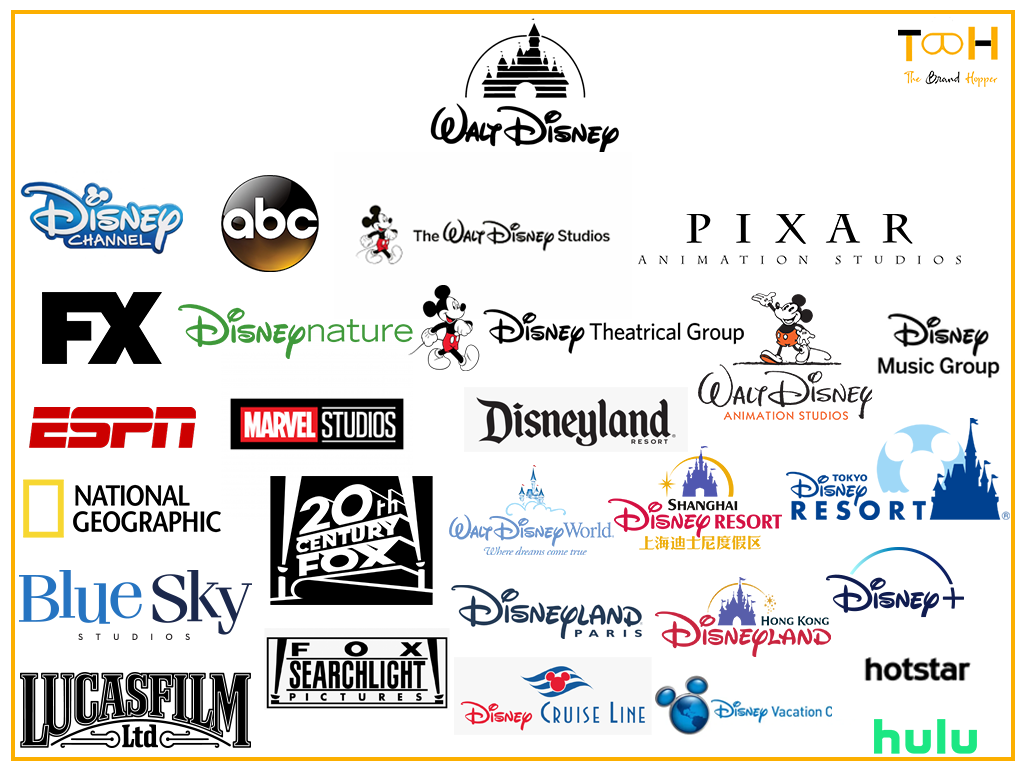The Walt Disney Company is one of the largest media and entertainment companies in the world. Despite having humble beginnings that were led by just one man who had big dreams, it is now known both for its films and for its leisure resorts and facilities located across the world. Many of the Disney characters have become household names in their rights, and the Disney resorts are some of the most popular destinations and attractions in the world.
Walt Disney consists of five central Disney Parks and resorts; two in the United States and three in other international locations. The American resorts include the original park in California and Disney’s largest park in Florida. The international resorts are in Paris, Hong Kong, and Shanghai. Each of these parks encompasses a collection of different themed parks and resorts.
With a world-class animation studio, dozens of business franchises, multiple international theme parks, and one of the biggest movie studios in the world, Disney has become one of the biggest media brands of all time.
Products and Services Portfolio of The Walt Disney Company
This huge conglomerate is divided into four main segments of business:
Disney Media Networks has control over all the television networks, cable channels, distribution and production companies, television stations, and a range of joint television ventures.
Disney Parks and Resorts is responsible for the management of all the parks and resorts owned by Disney.
Disney Studio Entertainment owns and manages all the Walt Disney Studios. It also owns and leads Lucas Film, Disney Nature, Disney Music Group, Pixar, Disney toon Studios, Disney Theatrical Group, Marvel Studios, and Walt Disney Animation Studios.
The Disney Consumer Products and Interactive Media segment control Disney Stores, Disney Digital Network, and Disney Publishing Worldwide.
Reaching the $1 billion box office mark is considered an enormous achievement in the film industry, this is something that The Walt Disney Company achieved on six different occasions just in 2019 while also managing to cross the $11 Billion mark globally which is the first time in Hollywood’s history.
History of The Walt Disney Company
Founded in 1923 by brothers Roy & Walt Disney, the Company was initially called Disney Brothers Cartoon Studio, which was eventually changed to The Walt Disney Studio and Walt Disney Productions, taking its current name The Walt Disney Company, in 1986. The first original character Walt created was a rabbit called Oswald the Lucky Rabbit.
Walt was an innovator; he created a short film that combined animation with real actors for the first time. This first short film was ‘Alice’s Wonderland.’ In 1928 while on a train, Walt came up with the idea of a mouse character named Mortimer, drawing up a few simple drawings; the mouse was later renamed Mickey Mouse. Disney’s first sound film Steamboat Willie, starring Mickey, was released in the same year and became an immediate smash hit; it was also the first cartoon to feature synchronized sound. In 1932, Disney signed an exclusive contract with Technicolor to produce animations in color, beginning with Flowers and Trees in 1932.
In 1937, Walt Disney took a considerable risk when he decided to produce the world’s first feature-length animation film, ‘Snow White and the Seven Dwarfs.’ requiring a considerable production budget of $1.49 million, this film turned out to be a critical and commercial success grossing $66 million after its release.
In 1954, Walt Disney went onto television in a big way marking the beginning of the Disneyland anthology series. This series would eventually run on three different networks, underwent six title changes, but managed to remain on air for 29 years, making it the longest-running primetime television series ever. In 1955, one of television’s most popular children’s series, ‘The Mickey Mouse Club’ debuted and made stars of a group of talented Mouseketeers.
Walt was never satisfied with what he had already accomplished and felt a desire to branch out. One area that intrigued him was amusement parks. He felt the need for a park where parents and children could go and have a good time together. This was the genesis of Disneyland and the new park was opened on July 17, 1955
In 1983, the Company decided to leave network television and prepare for the launch of a cable network, The Disney Channel. While the pay-tv service was still successful, they felt a need for a strong network presence as well. So, in 1985 Disney’s Touchstone division began ‘Golden Girls’ one of the most successful sitcom in American Television history.
Mergers and Acquisitons of The Walt Disney Company
In the 1990’s Disney moved into new areas by starting Hollywood Pictures and acquiring the Wrather Corp. and television station, KHJ. While in merchandising, Disney purchased Childcraft and opened numerous highly successful and profitable Disney Stores across the world.
In 1996, Disney completed its acquisition of Capital Cities/ABC network for $19 billion, the second-largest transaction in U.S. history which brought the country’s top television network to Disney, along with 10 TV stations, 21 radio stations, seven daily newspapers, and ownership positions in four cable networks.
In 2006, Disney purchased Pixar, best-known for its CGI-animated feature films for $7.4 billion which led to Steve Jobs becoming the largest single shareholder in Pixar. Another of Disney’s big acquisitions came in 2009, was when they acquired Marvel Entertainment for $4.24 billion and Lucasfilm for $4.05 billion in 2012.
In 2014, Disney acquired YouTube content producer Maker Studios, which later became the Disney Digital Network in 2017. In late 2019, Disney also launched its own digital streaming network Disney+.
Also Read: Alibaba Group – Creating A Brand While Disrupting Trade And Technology
Reason for success of The Walt Disney Company
Creating Content for Different Audience Segment:
One of the ways Disney manages to keep its fans engaged is by strategically creating content catering to different audience segments. For example, for Star Wars, Disney effectively drew in both millennials and older generations who enjoyed the original Star Wars. Disney also has an official Star Wars Instagram account, which boasts of 16.4 million followers, on which Disney keeps its audience engaged with videos, recipes, fun facts, and other content.
Alternatively, for the hit movie Frozen, Disney targeted a much younger generation that wouldn’t necessarily be interested in Star Wars or having an Instagram account, a majority of them are below the age of 12, Disney targeted them with an alternative medium like toys and consumer goods.
Using Nostalgia as A Tool for Maintaining Customer Loyalty:
From the day it was founded, Disney has been making an emotional imprint on people’s minds. Disney had managed to harness these emotions as a marketing technique, and uses nostalgia for reviving old classics like The Jungle Book, which grossed over 900 million dollars when it was released in 2016.
Another example is the remake of the 1991 classic ‘The Beauty and The Beast, ‘ which features the same story, songs, and characters as the original. Even the trailer of the movie was similar, which helped in establishing a strong sense of nostalgia among current parents, thereby enticing them to take their children to the cinema.
Masterful Storytelling that Resonates Throughout the Ages
Disney is one of the most compelling storytellers of all times, and it’s not just because they’re in the entertainment business. For example, to market the movie Inside Out, Disney created a series of memes with Inside Out characters and scenes, about current scenarios. These funny memes seem like all fun; however, they’re quite strategic as they help in establishing a distinct brand image in the mind of the viewers as they don’t necessarily see at it as an advertorial or promotional content.
Establishing Disneyland and Disney World as Destination Brands:
Disneyland and Walt Disney World are like a sacred rite of passage that every American child must go through, and it’s all because of Disney’s adaptability. Disneyland and Walt Disney World are constantly changing its themes, events, in accordance with popular trends of the moment. This creates a unique experience for returning visitors as it ensures that Disney always has new content for its visitors. One more advantage of a limited-time theme is that it creates a sense of urgency to visit the park now, instead of later.
Also Read: Beyond Superheroes: Why Is Marvel So Successful?
Conclusion
For more than nine decades now, The Walt Disney Company has created and served entertainment of the very highest quality. Since its very humble beginnings as a cartoon studio in 1923 to the giant conglomerate, it is today which includes Pixar, Marvel, Lucasfilm, and 21st Century Fox, Disney continues to provide quality entertainment for all age groups all around the world.





Very well written 🙂